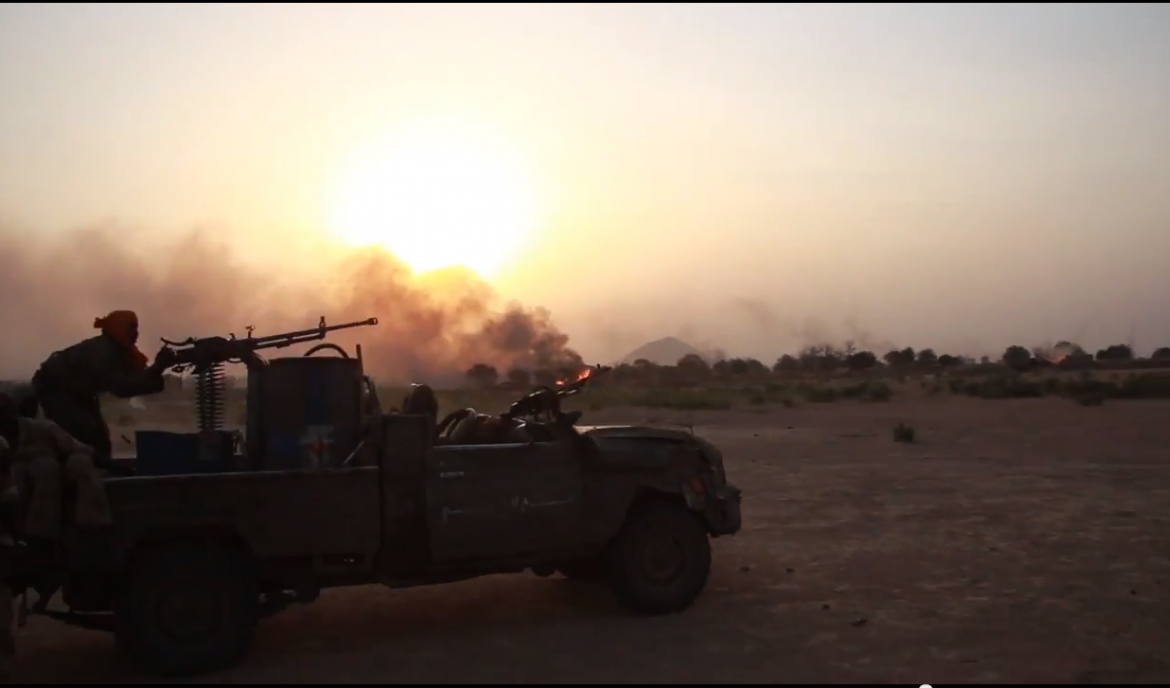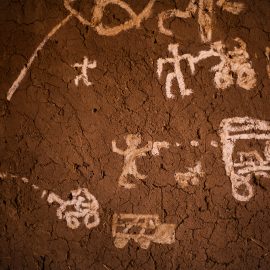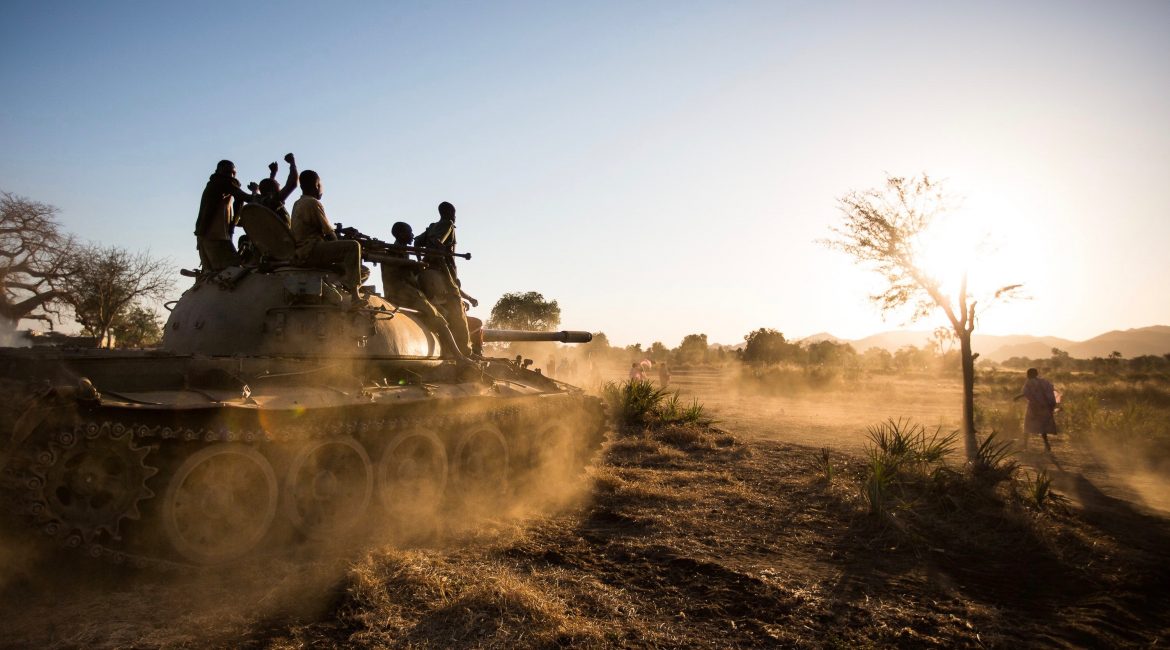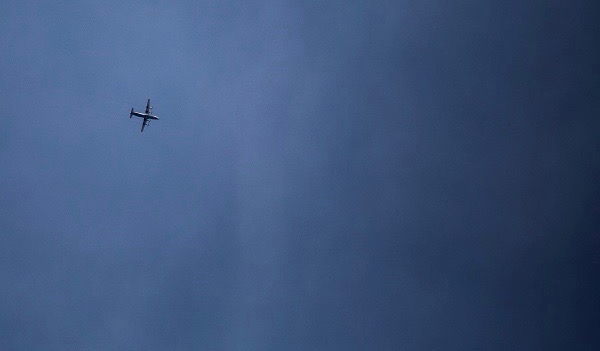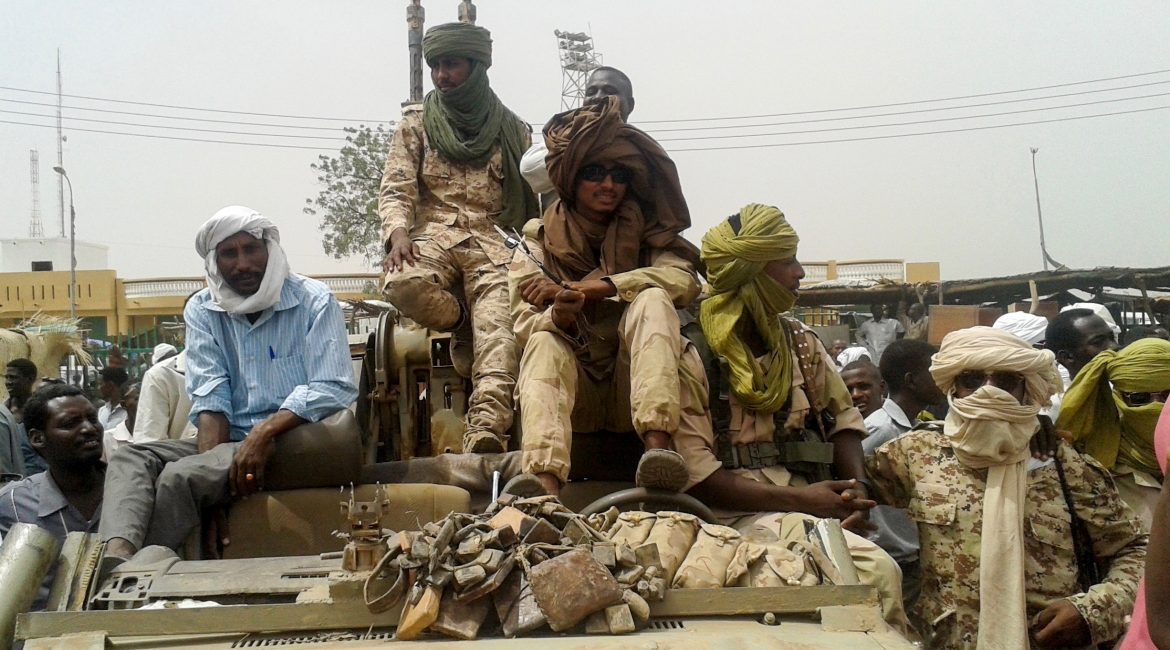Over the past month SPLA-N rebels have attacked nearly a dozen garrison towns across South Kordofan state.
Their goal is to disrupt the elections and show the government the scope of their military reach. The attacks have been highly coordinated, often hitting multiple garrison towns on the same day.
In the most recent attack a truck of ballots was seized on the road to Kadugli, the state capital. The rebels are targeting garrisons and military installations, however, according to the UN, thousands have been displaced.
The new campaign has had some success. Sudanese election officials have postponed parliamentary elections in seven counties, and effectively cancelled presidential elections.
Elections are scheduled to last from April 13 to April 16. Opposition parties and western governments have criticized them as undemocratic due to the fact that large swaths of the nation remain in open war, and most viable opposition parties have been banned.
The first rebel offensive began on March 11, in a dusty staging camp where Abdul Aziz El Hilu, SPLA-N’s leader, gave a speech to his armies’ expanding mobile units. “Bashir wants to raise himself up and be the president again for another five years,” he said. “But we will ruin his election.” His troops cheered, buoyed by their victory in January over the largest Sudan Armed Forces (SAF) offensive since the war broke out in 2011.
The SPLA-N mobile divisions were launched in 2012, and have grown rapidly as the rebels seized guns and Toyota Land cruiser trucks from the government during battles. In 2013, the SPLA-N fought alongside the Darfuri rebel group, Justice and Equality Movement (JEM) who had used mobile units for years.
Both JEM and SPLA-N are part of the Sudan Revolutionary Front (SRF), a united force of the nation’s rebel groups from the marginalized territories of South Kordofan, Darfur and Blue Nile states. Both sides share tactics and strategies, especially about using mobile units made up of technicals – Toyota Land cruisers mounted with weapons – to fight in the dry mountains and flat lands of Sudan.
As the sun rose the next day, dozens of camouflaged technicals rumbled towards the garrison towns of Tosi, Kologi, and El Rahmania in the east of South Kordofan state. Their targets were 5-10 hours away, and had seen almost no fighting since the war began. The towns lay along the strategic road between Abu Jubiha and Tolodi, a key SAF garrison. Kologi is the birthplace of the current governor of South Kordofan, Adam El Faki, and home to a number of garrisons.
The next morning Nuba Reports journalists accompanied a squad of technicals as they raced around a small mountain towards the Kologi garrison. The first gun shots screamed across the flat, dusty outskirts of the town. With little cover the rebels unleashed a barrage of bullets, RPGs, and anti-tank missiles on the garrison.
One mobile unit attacked the garrison from the north. Another attacked from the south, in the direction of Kologi town. It appeared that the SAF forces were surprised by the attacks and they fled after a short fight. The civilians left the town when SPLA-N arrived, but local militias from the Bagara and Shinola tribes aligned with the government fought for two hours before retreating.
The fighting was intense. The ground around Kologi is flat and both sides had little in the way of shelter from incoming rounds.
“We fled the area when they (SPLA-N) took control,” Ahmed GodGadoura, a res-ident of Kologi, told Nuba Reports. “It was clear that SPLA-N controlled the area. We could tell from the gun fight that took place before between SPLA-N forces and the SAF garrison.”
Less than an hour to the south, another unit was attacking a small garrison in Tosi, and to the north a large unit took over a garrison in El Rahmania. El Rahmania is only 20 kilometers away from Abu Jubiha,one of the biggest towns in government controlled territory. A unit departed for Abu Jubiha the next day.
Another assault took place near Kadugli in the northern part of the state, but Nuba Reports was unable to verify the details.
Speaking on condition on anonymity because of the government black out on in-formation from the region, a senior SAF officer told Nuba Reports that the government army struggled in Kologi because they weren’t prepared. “Garrisons like Tolodi are in a good condition to defend themselves, but not in Kologi.”
On Monday, March 16, South Kordofan governor Governor Adam El Faki accused the rebel forces of pillaging and burning about 250 homes, as well as killing and injuring civilians in Kologi . El Faki went on to say the rebels torched 450 houses in El Rahmania, a town on the main road to Kologi. About 5,000 people fled from El Rahmania to the outskirts of Abu Jubiha.
Reports by Radio Dabanga quoted residents of Kologi and El Rahmania dis-counting the governor’s accusations, saying that no civilian property was damaged and that the rebels were clearly targeting government forces.
According to the UN Office for the Coordination of Humanitarian Affairs (OCHA) in Sudan, about 23,600 people fled their villages in the Nuba Mountains following clashes between government forces and SPLM-N fighters between 9 and 18 March. The newly displaced, most of them women and children, sought refuge in El Abbasiya, Abu Jubiha and Rashad.
In press releases after the attack SPLA-N said it was working in tandem with the Sudan Call coalition, an alliance of unarmed and armed opposition groups in Sudan that are working together to address the key issues at play in this election. Armed actors said they would work to disrupt the elections while unarmed actors called for a boycott.
The groups under Sudan Call had previously reached an agreement brokered by German diplomats to delay the elections and engage in dialogue with the ruling National Congress Party. However the NCP backed out of the deal shortly after and the dialogue at the end of March was cancelled to the disappointment of the UN and international diplomats who had brokered the deal.
Some members of Sudan Call denied that the SPLA-N offensive was part of their campaign, however SPLA-N is quoted in AFP saying that the campaign intends to integrate the various means of struggle, armed uprising and civil disobedience to work together to stop the elections.
On April 4 the rebel spokesperson said “We reassure that SPLA-N forces will continue with their military campaign plan to support the [Sudan Cal]) “Leave” Campaign to stop the election. We call upon all people to distance themselves of military locations and sites as they are legitimate targets to attack.”
The day after the attack the Sudan call leaders made a statement: “The Sudan Call forces appeal on the masses of our people to escalate the resistance against the fraudulent elections and overlook its results and to continue the resistance campaigns until the overthrow of the regime.”
A diplomat working in the region who asked to remain anonymous because he wasn’t authorized to speak on record said that the coalition was in a unique position to push for change because it brings together a broad spectrum of groups while also building consensus from on the ground and not just from political elites.
In a country as divided as Sudan, such broad alliances also have the potential to unravel quickly.
SPLA-N’s next attacks were on March 27 in the far north of the state. Three separate rebel units attacked the towns of Habila, Umm Heitan and El Fangalo. All three towns contain a SAF garrison.
The fight for Habila was intense and bloody. Up to 75 SPLA-N were wounded, and many SAF were killed (the SPLA-N says 54 but Nuba Reports was unable to verify).
Nuba Reports obtained footage shot by the rebels during the fight. In the video, technicals packed with soldiers fight their way across an open plain outside of Habila, which can be seen in the distance. Fires where artillery has hit mark the landscape.
After a fierce gunfight, the rebels enter the town, driving through streets that seem completely empty. After speaking with a few civilians left behind, they enter the commissioner’s house. On the way to the garrison they pass bodies in uniform laying along the road. Only a small trench and a wire fence protect the garrison. In another shot, the SPLA-N is in a different location counting the weapons and vehicles they have obtained.
According to soldiers’ accounts, the SAF forces were unable to flee, and most were killed when SPLA-N finally managed to take the garrison. SPLA-N held it for two hours before taking what supplies they could – including six technicals – and leaving.
One wounded soldier described entering the town and driving to the garrison. His truck drove into a trench on top of SAF soldiers who he had to bayonet in hand-to-hand combat. The truck’s gunner kept firing as they pulled the truck out. He was shot as he exited the trench.
A wounded captain said his troops will keep proceeding to areas they have not attacked before.
In Umm Heitan and Fangalo, the fighting was minimal as SAF was able to escape.
For the largely Nuban rebels, Habila town holds great significance and is an important town to attack. In the 1970’s thousands of hectares were taken from local communities and given to industrial absentee landowners who ended up driving many of the farms into ruin.
Habila has 45,000 residents living in the broader area. Many fled during the fighting in which the town’s market was burnt to the ground. The spokesman for the SAF, Col. El Sawarmi Khaled Saad, denied the attack on the garrison. He told the Sudan News Agency that the SPLA-N rebels had attacked Habila, destroyed houses and government facilities, and torched the town market.
The next day SPLA-N attacked the garrison of Alfarishaiya, a short drive from the large town of Dilling in the northern part of South Kordofan. SPLA-N claimed it captured further weaponry and held the area for two hours before departing.
On April 4 the SPLA-N claimed it seized a truckload of ballots headed for Kadugli.
In Blue Nile, other divisions of SPLA-N have made attacks on government garrisons in March and refugees have marched in protest against the elections. The refugees were driven to South Sudan by bombing and fighting. Early reports say that 5000 marched, demanding the elections be cancelled as they and many like them in the conflict areas are unable to vote.
There are also reports that other members of the SRF will take part in this armed campaign in Darfur, where SAF has joined with the Rapid Support Force (RSF), a militia of ex-Janjaweed fighters fighting under Sudan’s intelligence arm, NISS.
The rebel campaign has not moved the front line, but has created disruptions as the elections approach. Since the war started, SAF has been unable to make major gains, instead losing thousands of soldiers as well as valuable equipment.
SPLA-N has been able to expand their territory, but it is still not putting direct pressure on Khartoum. This campaign is an attempt to do so, but there is also the chance it could backfire if the attacks turn potential sympathizers against them in the surrounding areas.
President al Bashir originally based his election campaign on his ability to quash the rebellions in Darfur, South Kordofan and Blue Nile. It is likely the SAF forces will attempt to launch another attack before the rainy season, which starts in June, but without a large strategic shift it is unlikely they will be able to make serious gains given the rebels successes this year.

